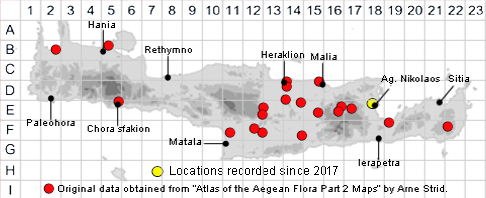
SPECIES DESCRIPTION
GERANIUM TUBEROSUM
Family and Genus:- See- GERANIACEAE/G. TUBEROSUM Group
Common Names:- Tuberous cranes-bill
Homotypic Synonyms:- None
Meaning:- Geranium (Gr) Crane. A name used by the Greek physician and
botanist Dioscorides referring to to the shape of the fruit resembling the head of a
crane.
Tuberosum (L) Swollen, tuberous.
General description:- Short to medium, hairy perennial.with a small, globose
tuber.
Stem:-
1) Solitary, branched above.
Leaves:-
1) Greyish-green, mostly basal 6-8 cm wide, long-pedicellate, with 3-6 lobed
segments arranged in two rows along the stem.
2) Cauline leaves absent.
Flowers:-
1) Purplish-pink with darker veins, 14-24 mm, borne in cymes.
2) Lobes, of the lower bracts toothed pinnatifid.
3) Pedicels, hairs eglandular.
4) Sepals, 4-7 mm.
5) Petals, 8-13 mm. notched.
6) Styles, 18-20 mm in fruit, stout and hairy right up to the stigmas.
Fruit:-
1) Mericarps, hairy, without ridges.
2) Beak of the fruit abruptly contracted into a very short style (less than 0.5 mm).
Key features:-
1) Petals, 8-13 mm.
2) Cauline leaves, other than bracts absent.
3) Lobes, of basal leaves with 3-6 segments on each side.
Habitat:- Weed of traditional agriculture, in cereal fields, vineyards and orchards. 0-
1200 m.
Distribution:- Scattered in E Greece, lacking in the west. - C & E Mediterranean
region; widespread and variable in SW Asia. Limited distribution on Crete, mainly
central and eastern.
Flowering time:- Mid-Mar to early May.
Photos by:- Steve Lenton
